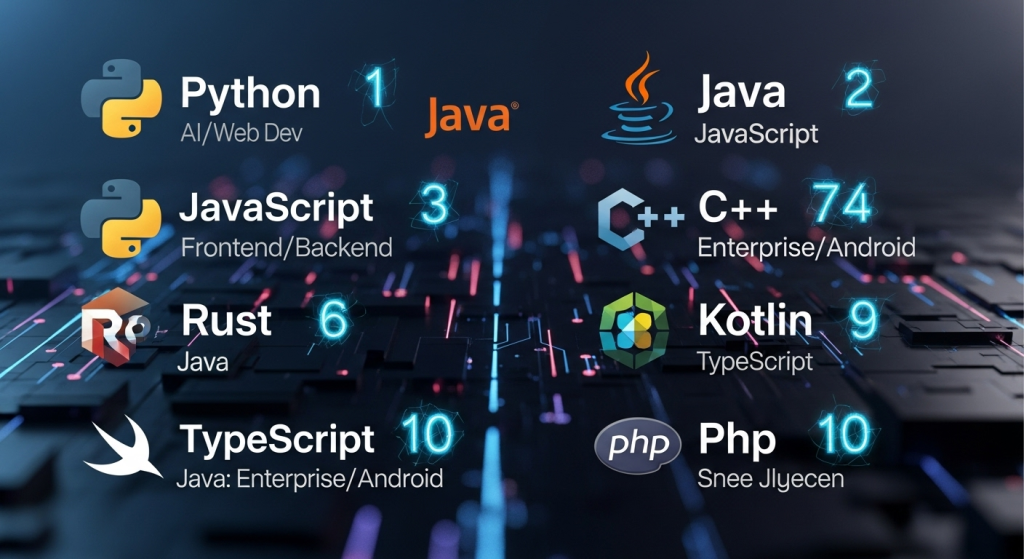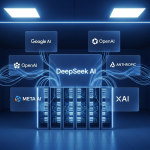1. Python: The Swiss Army Knife of Programming
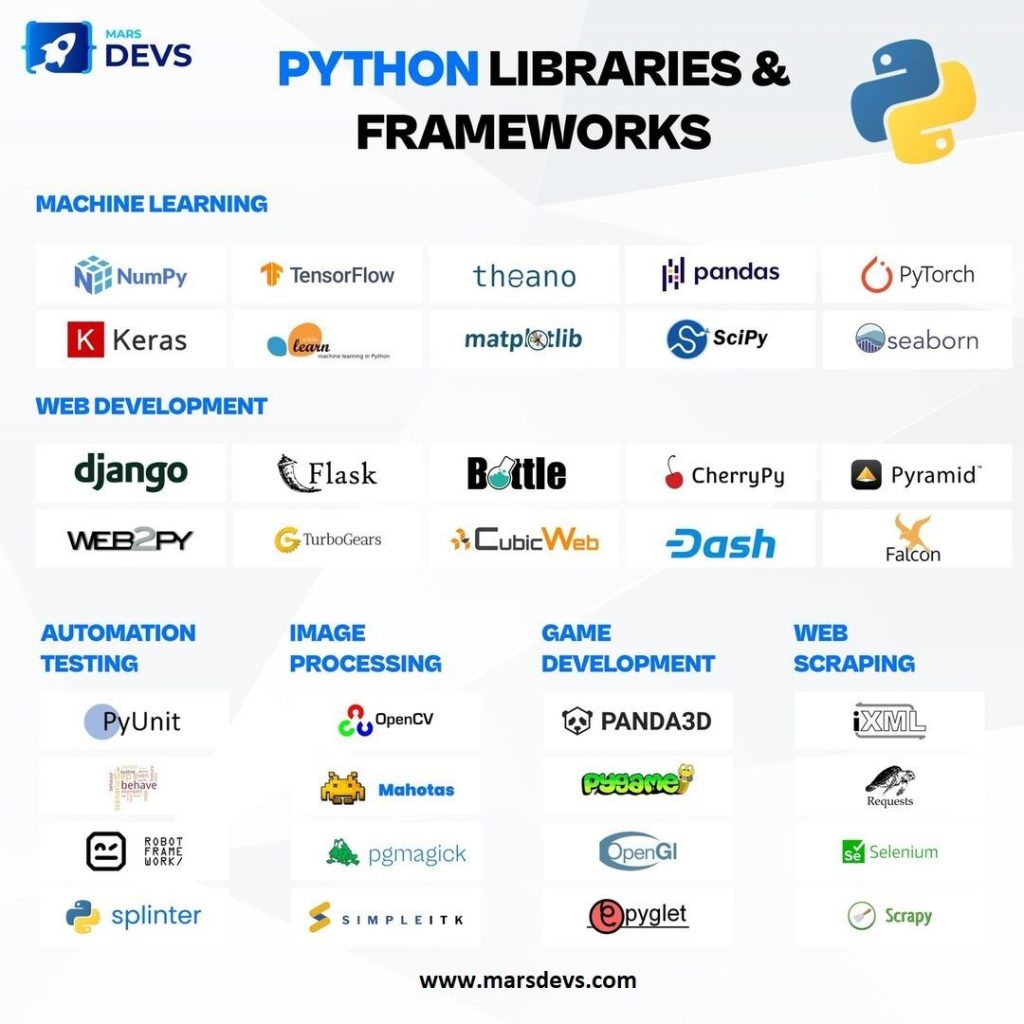
Tags: Python Programming, Web Development, Data Science, Machine Learning
Introduction
Python has emerged as one of the most versatile programming languages, powering everything from web applications to artificial intelligence. Its simple syntax and vast ecosystem make it ideal for beginners and experts alike.
Key Features
- Easy-to-read syntax
- Cross-platform compatibility
- Extensive standard library
- Strong community support
Use Cases
- Web Development (Django, Flask)
- Data Analysis (Pandas, NumPy)
- Machine Learning (TensorFlow, PyTorch)
- Automation and Scripting
Getting Started
- Installation guide
- Basic syntax examples
- Recommended learning resources
Future Trends
- Python in quantum computing
- Enhanced performance with PyPy
- Growing adoption in edge computing
2. JavaScript: The Language of the Web
Tags: JavaScript, Frontend Development, Node.js, Web Applications
Introduction
JavaScript is the backbone of modern web development, enabling interactive and dynamic user experiences. With Node.js, it has also become a powerful backend language.
Key Features
- Event-driven programming
- Asynchronous operations
- Rich ecosystem (npm)
- Cross-browser compatibility
Use Cases
- Frontend frameworks (React, Vue, Angular)
- Server-side development (Node.js, Express)
- Mobile app development (React Native)
- Game development (Phaser, Three.js)
Getting Started
- Setting up a development environment
- Basic DOM manipulation
- Introduction to ES6+ features
Future Trends
- WebAssembly integration
- Progressive Web Apps (PWAs)
- Increased use in IoT devices
3. Java: The Enterprise Powerhouse
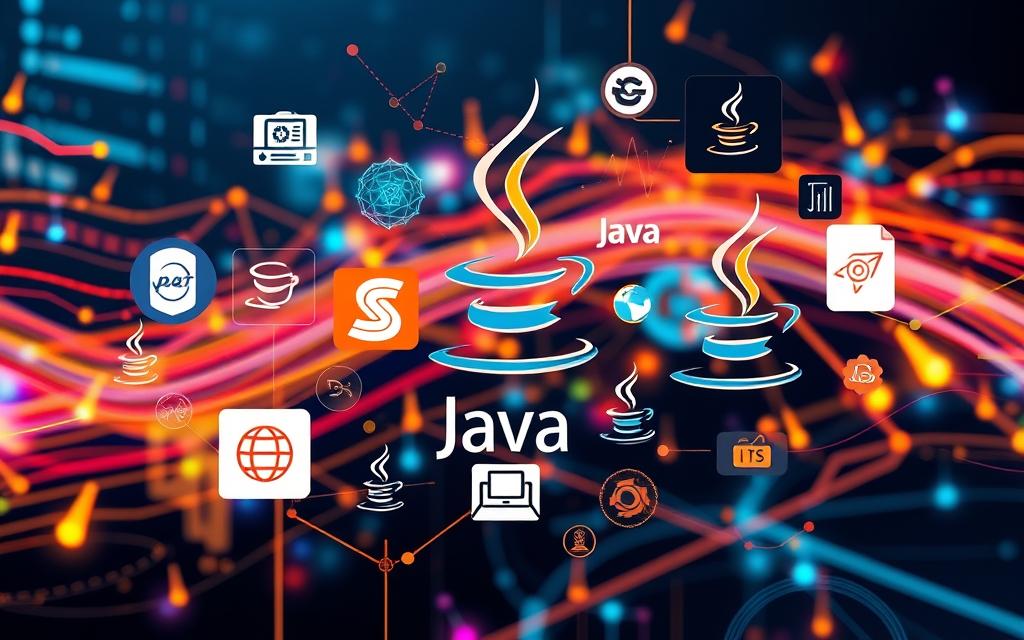
Tags: Java Programming, Android Development, Enterprise Applications
Introduction
Java remains a dominant force in enterprise environments and Android app development due to its stability, performance, and portability.
Key Features
- Write Once, Run Anywhere (WORA)
- Strong memory management
- Multithreading capabilities
- Robust security features
Use Cases
- Enterprise software (Spring Boot)
- Android applications (Android SDK)
- Big data technologies (Hadoop)
- Embedded systems
Getting Started
- JDK installation
- Basic syntax and object-oriented concepts
- Building a simple Android app
Future Trends
- Java in cloud-native applications
- Enhanced performance with GraalVM
- Continued dominance in enterprise solutions
4. C++: The Performance Champion
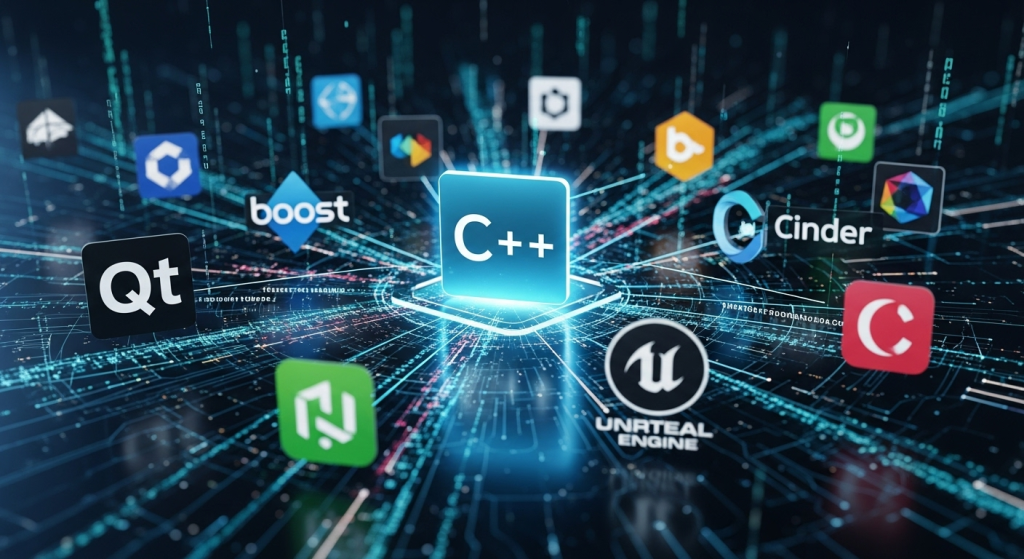
Tags: C++ Programming, Game Development, System Programming
Introduction
C++ is the go-to language for performance-critical applications, offering low-level memory control alongside high-level abstractions.
Key Features
- Manual memory management
- Object-oriented and procedural paradigms
- Template metaprogramming
- Direct hardware access
Use Cases
- Game engines (Unreal Engine)
- Operating systems
- High-frequency trading systems
- Embedded systems
Getting Started
- Compiler setup (GCC, Clang)
- Basic syntax and pointers
- Simple project examples
Future Trends
- C++ in AI and machine learning
- Continued use in blockchain technologies
- Performance optimizations in C++23
5. Go (Golang): The Modern Backend Language
Tags: Golang, Backend Development, Cloud Computing
Introduction
Developed by Google, Go combines the performance of compiled languages with the simplicity of scripting languages, making it ideal for cloud-native applications.
Key Features
- Static typing
- Goroutines for concurrency
- Fast compilation
- Minimalist syntax
Use Cases
- Cloud services (Kubernetes, Docker)
- Microservices architecture
- Networking tools
- CLI applications
Getting Started
- Installing Go
- Basic syntax and concurrency model
- Building a simple web server
Future Trends
- Increased adoption in DevOps tools
- Growth in blockchain applications
- Enhanced standard library features
6. Rust: The Safe Systems Language
Tags: Rust Programming, Systems Programming, Memory Safety
Introduction
Rust has gained popularity for its focus on memory safety without sacrificing performance, making it a strong alternative to C++.
Key Features
- Zero-cost abstractions
- Ownership model
- Fearless concurrency
- C interoperability
Use Cases
- Operating systems
- WebAssembly
- Game development
- Cryptography
Getting Started
- Rustup installation
- Basic syntax and ownership rules
- Building a simple CLI tool
Future Trends
- Rust in Linux kernel development
- Increased use in blockchain
- Growth in embedded systems
7. Kotlin: The Modern Java Alternative
Tags: Kotlin Programming, Android Development, JVM Languages
Introduction
Kotlin, officially supported by Google for Android development, offers concise syntax and full interoperability with Java.
Key Features
- Null safety
- Extension functions
- Coroutines for concurrency
- 100% Java interoperability
Use Cases
- Android apps
- Backend development (Ktor)
- Multiplatform projects
- Scripting
Getting Started
- Setting up Kotlin with IntelliJ
- Basic syntax and Android example
- Converting Java code to Kotlin
Future Trends
- Kotlin Multiplatform for iOS
- Increased backend adoption
- Enhanced tooling support
8. Swift: Apple’s Programming Language
Tags: Swift Programming, iOS Development, macOS Apps
Introduction
Swift is Apple’s modern language for building fast and safe applications across all Apple platforms.
Key Features
- Type inference
- Memory safety
- Protocol-oriented programming
- Interactive Playgrounds
Use Cases
- iOS/macOS apps
- Server-side development (Vapor)
- Machine learning (Core ML)
- Game development (SpriteKit)
Getting Started
- Xcode setup
- Basic syntax and SwiftUI
- Building a simple iOS app
Future Trends
- Swift on Windows/Linux
- Increased use in AI/ML
- Growth in server-side adoption
9. TypeScript: JavaScript with Superpowers
Tags: TypeScript, Frontend Development, Web Applications
Introduction
TypeScript adds static typing to JavaScript, helping developers catch errors early and build more maintainable codebases.
Key Features
- Optional static typing
- Enhanced IDE support
- JavaScript interoperability
- Advanced tooling
Use Cases
- Large-scale frontend apps
- Node.js backend development
- Full-stack applications
- Library development
Getting Started
- TypeScript compiler setup
- Basic types and interfaces
- Migrating from JavaScript
Future Trends
- Growing adoption in enterprise
- Improved performance
- Enhanced type system features
10. PHP: The Web’s Backbone
Tags: PHP Programming, Web Development, WordPress
Introduction
Despite newer alternatives, PHP continues to power a significant portion of the web, including platforms like WordPress and Facebook.
Key Features
- Easy deployment
- Vast hosting support
- Rich framework ecosystem
- Continuous improvements
Use Cases
- WordPress plugins/themes
- E-commerce platforms (Magento)
- Web applications (Laravel)
- Content management systems
Getting Started
- Setting up a local server
- Basic syntax and MySQL integration
- Building a simple CMS
Future Trends
- Performance improvements (PHP 8+)
- Growth in microservices
- Enhanced tooling support
Conclusion
Each programming language has its strengths and ideal use cases. Whether you’re interested in web development, mobile apps, or system programming, there’s a language tailored to your needs.

